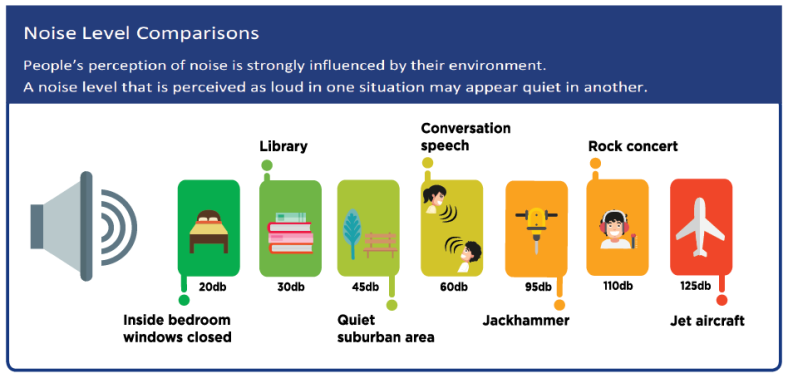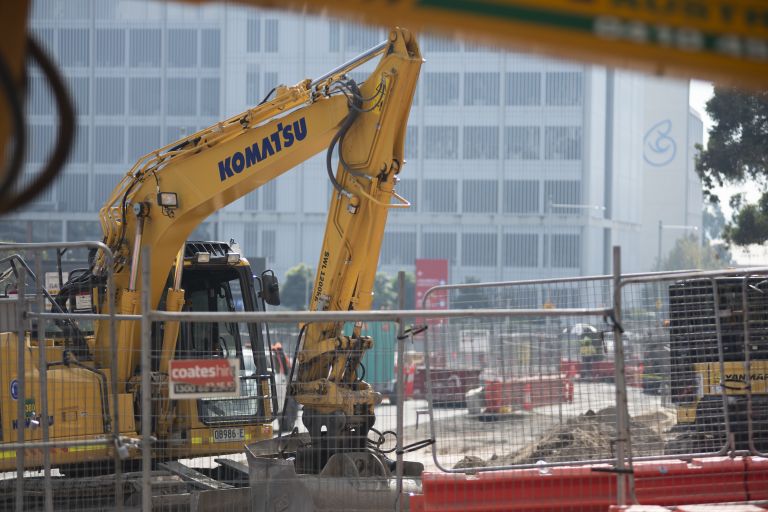Transport for NSW approach
Major construction is complete on the Parramatta Light Rail Stage 1 project, while works continue to deliver the remaining operational assets ahead of the commencement of passenger services in mid-2024.
Noise and vibration are unavoidable in a major project such as the Parramatta Light Rail. Transport for NSW (TfNSW) works hard to minimise impacts on the community.
Specific works to minimise the duration of construction are prioritised. Community feedback is taken into account when designing construction programs.
TfNSW is generally not permitted to work in any one location for more than four nights in a seven-day period. This ensures the community receives regular respite while construction works are ongoing.
Impact on property
Before vibration-generating construction, properties next to work areas may undergo a ‘dilapidation survey’. This is also known as a ‘pre-construction property condition survey’.
Properties are inspected to record their current condition and to document any existing defects. This is compared to a second survey once construction work is complete.
The level of impact may vary from person to person depending on:
- the location of their property
- the type of construction activity
- duration of works.
Causes of noise and vibration
Common noise sources include:
- heavy machinery
- trucks
- pavement works
- excavation or earthworks that involve jackhammering or rock-breaking
- mandatory reversing alarms on mobile equipment.
TfNSW works to guidelines that limit the level of vibration generated. This minimises the risk of cosmetic damage to nearby residential or commercial buildings.
Construction works generate varying degrees of vibration, depending on equipment and methods used. These include:
- earthworks
- site clearing and demolition
- concrete breaking and removal
- ground compaction.
Measuring noise and vibration
Construction noise and vibration is temporary and often changes as work progresses. During construction activity, noise and vibration is measured so it does not exceed approved standards.
People's perception of noise is strongly influenced by their environment. A noise level that is perceived as loud in one situation, may appear quiet in another.

Copyright State of New South Wales (Transport for NSW)
Noise level comparisons infographic
The table below is a text representation of the information detailed in the graphic above.
| Noise source | Volume in decibels |
| Inside bedroom, windows closed | 20 |
| Library | 30 |
| Quiet suburban area | 45 |
| Conversation speech | 60 |
| Jackhammer | 95 |
| Rock concert | 110 |
| Jet aircraft | 125 |
Managing community impacts
Extensive noise and vibration modelling for construction works has been carried out. This was done to:
- predict expected levels of noise and vibration
- inform how these can best be managed.
The modelling considers a range of factors including:
- the location of residents, businesses and sensitive community organisations
- the type of construction activities
- the machinery and equipment used
- existing background noise and vibration levels
- topography (the shape and features) of the area.
Reducing noise and vibration
A range of measures are used to reduce noise and vibration during construction, including:
- selecting machinery and planning activities that will minimise construction impacts
- installing measures such as noise blankets, acoustic sheds and non-tonal reversing alarms
- providing respite periods
- limiting high vibration-causing activities to standard construction hours, where possible
- notifying nearby residents in advance of noisy or vibration-generating works
- noise and vibration monitoring to ensure works are kept within allowable limits, undertaken at locations identified by the project’s acoustic and vibration consultants.
Working hours
Most light rail construction work is carried out during ‘standard hours’:
- 7am to 7pm Monday to Friday.
- 8am to 6pm on Saturday, with exceptions in some areas.
Usually the light rail construction crews do not work on Sundays or public holidays.
There will be occasions where work needs to occur outside standard hours (for example, at night) for safety or operational reasons, such as:
- major road closures
- work at critical intersections
- works that would be considered disruptive to businesses, residents and road users.
Businesses and residents are notified in advance anytime that construction activities need to take place outside standard hours unless it’s an emergency.
To see upcoming work schedules, visit Weekly works.
